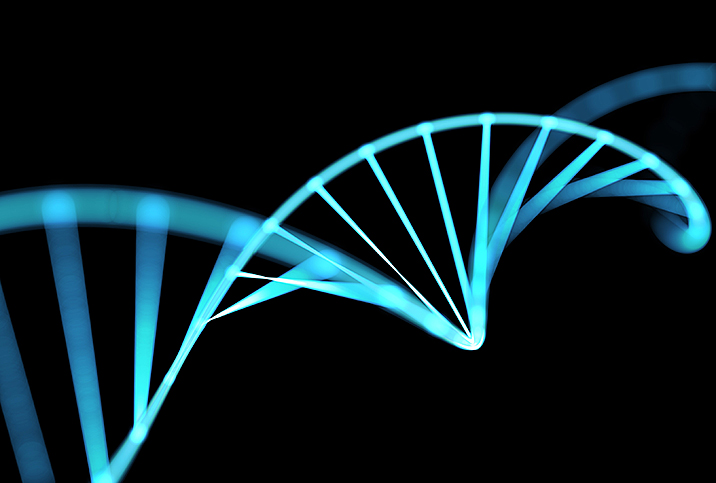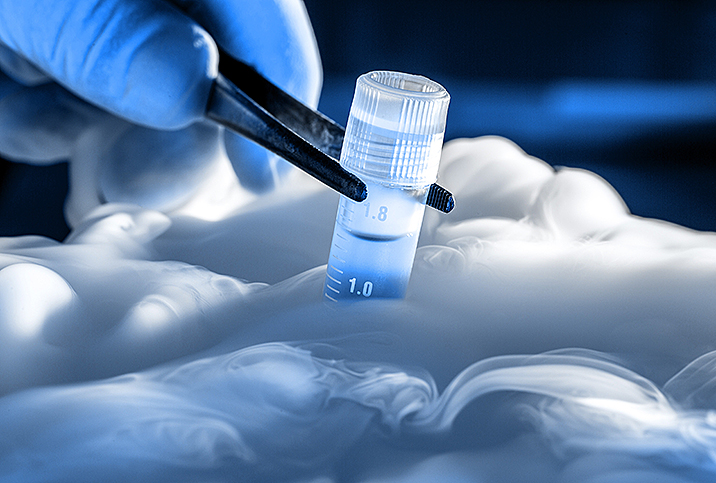How a DNA Test Changed My Life

One picturesque Christmas Eve, Midnight Mass delivered a calming and grounding awe, the kind that left me on a mission to slow down and take in all the miracles of life that we take for granted. I was closing out the year with an inkling that something big was about to happen. I’m no psychic, but intuition has always served me well. As I stood outside my church, my phone pinged: “Your AncestryDNA test results are ready.”
I had recently taken up a new hobby: exploring my heritage through a membership with AncestryDNA, the largest consumer DNA network. That membership is the key to unlocking millions of public records. AncestryDNA seamlessly uses the family details users provide to comb through these public records and discover clues about their ancestry.
After building what I thought was an accurate family tree, I decided to further my search by taking an AncestryDNA test. The company privacy statement contained a firm warning: “You may discover unexpected facts about yourself, your family or your health when using our services. Once discoveries are made, we can’t undo them.”
I wasn’t concerned. I was sure I knew who my parents were. Both of them died relatively young, and I didn’t have many family members left—or so I thought. I decided I would wait until morning to look at my test results, as a Christmas gift to myself.
Merry Christmas—You’re Jewish!
Grandpa Bryan always said we were Irish, and with our last name, who would argue? But my father’s mother left the family when my father was a baby, and I wasn’t close to my mother’s side of the family, so I wanted to find out more. I excitedly opened up the AncestryDNA app on my phone.
What I discovered was the biggest shock I’ve received in my life.
The test breaks down your heritage in percentages. The first item I saw: I am 50 percent Ashkenazi Jewish, from Belarus and Lithuania. My immediate reaction was, “This has to be wrong.” Neither my mom nor my dad was Jewish. The results also revealed that I am 38 percent English and smaller percentages of Scandinavian, German and Irish, which aligned with what I had put together on my mother’s side of my tree. But so many of these results did not make sense.
I opened up the app again and noticed there was a section for DNA matches. At the top, I shared 3,454 centimorgans (cm) with a man. The relationship: parent/child. I froze. Did my mom have an affair? No way. Not my mom, who made me wear shorts under my skirts until I was 11 and who once told me how hard she and my dad tried to conceive me.
A centimorgan is a unit for measuring genetic linkage, or how much DNA you share with relatives. The more centimorgans you share, the more closely you are related. The parents section listed an additional eight people who matched my DNA, ranging from 1,294 to 2,187 cm. According to the chart, these people were “close family members” who could be half-siblings or first cousins, but I had never met any of them. I scrolled a little farther and started to recognize some surnames on my mom’s side of the family. That was a relief; it confirmed that I was indeed my mom’s biological child.
An enlightening reply
I decided to reach out to these “close relatives.” I sent them the following message: “I received my AncestryDNA results today, and you came up as a close relative. I am confused because I do not know you. I am wondering if they messed up my test because the information seems inaccurate. Can you tell me what your experience has been?”
My first response was from a woman with whom I shared 2,106 cm: “Not really sure...my parents had artificial insemination to have me, so my dad is a sperm donor.”
What I would later confirm was that this woman was indeed my half-sister. I, too, was donor-conceived, but my parents took that fact to their graves. My intuition was correct: Something big was about to happen.
DNA never lies
I called AncestryDNA’s customer service department the very minute it opened. I explained my confusion to the woman on the line. She transferred me to a supervisor.
I asked one question that still stands out in my mind: “How often does your lab get this wrong, and have there ever been mixups?”
“Never,” he replied.
My heart broke. The dad I loved so much, the man who was not only my dad but my best friend, the man who left this world when I was only 22 years old, did not share DNA with me. I was so proud of that DNA. As weird as it may sound, sharing a part of him was like still having a part of him. But at that moment, I felt like I never had him at all. It was like he had died all over again.
After I began asking family members questions, one comment from a family friend brought it full circle: “Your dad had a vasectomy during his first marriage, so we all wondered how you happened.” My DNA would never reveal matches from my dad’s side of the family. Instead, my DNA matches were strangers.
Piecing together a puzzle
Finding out I was donor-conceived gave me both legitimate and irrational fears. All of what I thought I knew about my paternal medical history was incorrect. I started researching medical risks for Ashkenazi Jewish women. For most of my life, I have dealt with anemia and hypothyroidism. On many occasions, doctors and specialists had asked me if I am Ashkenazi Jewish. Of course, my answer had always been no. I reached out to my biological father through Ancestry, but I haven’t received a response. Getting medical information is not likely.
I felt so alone with my thoughts. I was angry that my parents had never told me the truth. I began having a hard time concentrating at work. I didn’t enjoy my usual activities. Depression hit me like a slap in the face. I knew it was time to see a therapist.
Even the therapist was taken aback by my story. She reassured me, however, that what I felt was completely normal: I was simply experiencing post-traumatic stress. I needed to take my time and allow myself to experience what I was feeling. I had to mourn the loss of who I thought I was and proceed with caution in learning more about my real identity.
Today, thanks to tests I have taken with both AncestryDNA and 23andMe, I know I have 15 siblings. Most have not responded to my messages. Some have, and it’s been a surreal experience to see photos of so many people who look like me. We even have similar career paths and interests. On a recent trip back to my home state of Michigan, I met two half-sisters at a restaurant and felt an immediate connection, as though I had known them for my whole life.
Slowly, I began to feel better about being donor-conceived.
Labs, fertility doctors, human rights
After connecting with Facebook groups, I realized I am not alone. An estimated 30,000 to 60,000 donor-conceived children are born each year in America.
One resource center, We Are Donor Conceived, says that in the 1970s it was not uncommon for fertility doctors to tell parents to “never tell the children they were conceived using a donor.” The resource center also suggests that donor-conceived children’s human rights are violated through the withholding of personal health information due to donor and parental anonymity.
My birth certificate lists my nonbiological father as my natural father. It mentions nothing about my being conceived using a donor. If I had not taken a DNA test, I could have spent my entire life believing this information was accurate.
Is this a violation of my human rights? I am still working my way through the answer to that question.
Through Google and my AncestryDNA membership, I was able to find out that my donor is a 70-something divorced attorney whose nose I inherited. There was a good deal of online information, including a recording from a heartfelt speech he once gave about his mother. Hearing the sound of his voice told me all I needed to know: he is a good person.
Still the same person
So where does this leave me? A friend of mine said something I needed to hear: “Nothing has changed about you. You are still the same person you were before you took that test.”
He was right, of course, but it took me a while to believe it. Even though I’m only 50 percent Jewish, I still wanted to learn more. Most of what I knew about Jewish people—and I’m ashamed to admit this—I had learned in a high school history class and from watching “Schindler’s List.”
When I began taking catechism classes, the church educator asked me why I wanted to become Catholic. When I explained what had happened at Christmas, I was concerned she might tell me I could not become Catholic. Instead, she looked at me with a warm smile and said, “Well, my dear, that was the Holy Spirit.”
If there is one thing that this discovery has brought me, it’s a closer relationship to God and Jesus Christ. I am proud of my Jewish heritage, and I don’t think it was a coincidence that I got this information on Christmas. As I said, I’m no psychic, but my intuition has always served me well.

















